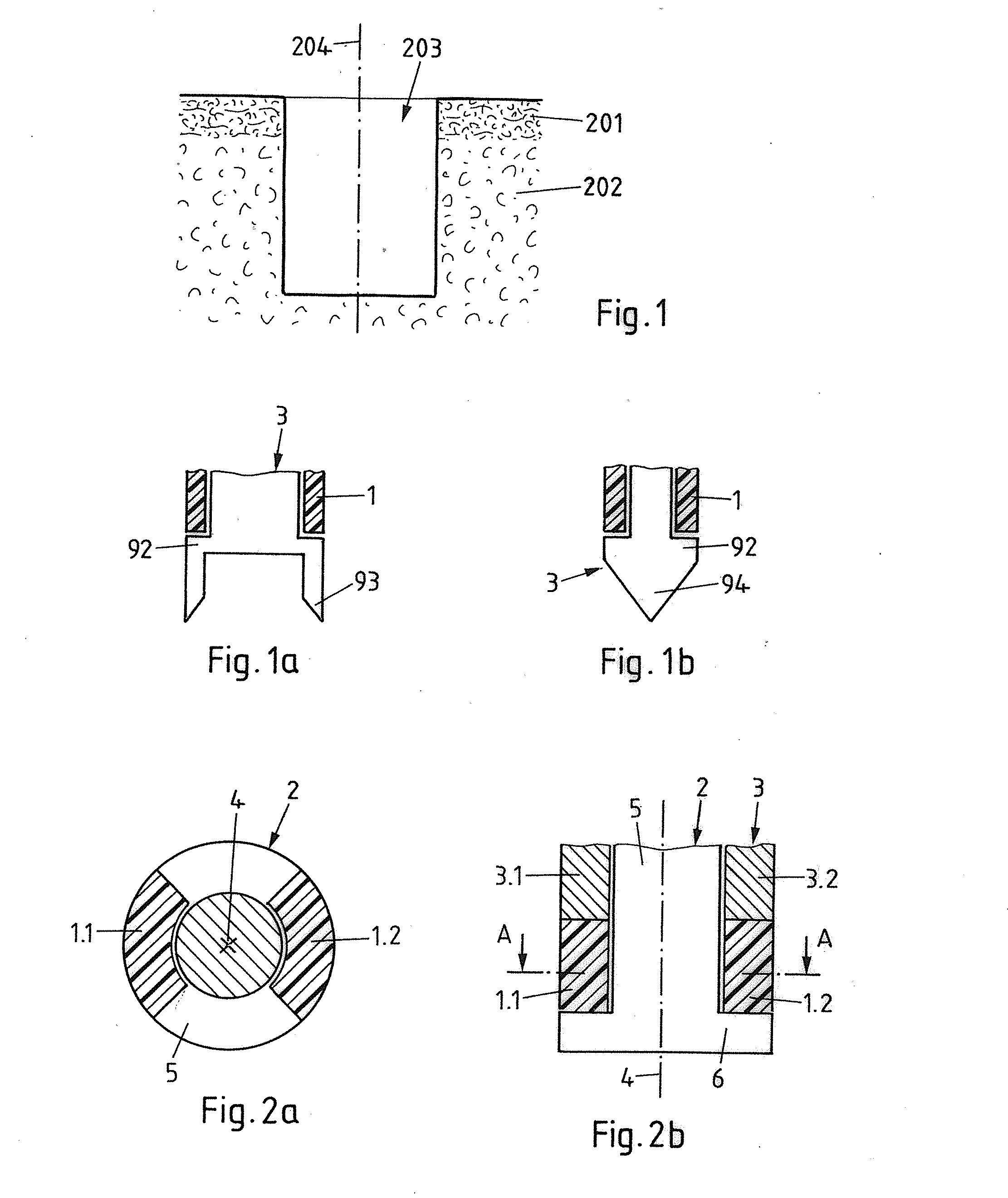Method and device for reinforcing and/or lining material
a technology of reinforcing material and reinforcing elements, applied in the field of mechanical engineering, material science and construction, can solve the problems of insufficient material stability or insufficient stability of the anchoring in the porous material, adverse effects on the load bearing capacity of the joining element-material connection, and the long-term stability of the anchoring, so as to reduce energy loss, improve the efficiency of the process, and facilitate the design and handling of the tool
- Summary
- Abstract
- Description
- Claims
- Application Information
AI Technical Summary
Benefits of technology
Problems solved by technology
Method used
Image
Examples
Embodiment Construction
[0191]FIG. 1 shows a portion of porous material, for example of a board of a composite or sandwich material. The depicted porous material includes a top layer of comparably dense and hard covering material 201, for example, laminated onto less dense composite porous material 202. An initial opening 203, in which a joining element—such as, for example, a screw or a pin—is to be anchored, has, for example, been made by drilling. Alternatively, the initial opening 203 may have been pre-processed during the building object manufacturing process. An opening axis 204 is shown. In case the opening is made by drilling, the opening may have rotational symmetry with respect to the axis 204. Because of the relatively low mechanical load resistance of the brittle composite porous material, it is desirable to improve the mechanical stability of the porous material prior to the anchoring of the joining element.
[0192]In accordance with the fifth aspect of the invention, an initial opening 203 is m...
PUM
| Property | Measurement | Unit |
|---|---|---|
| Fraction | aaaaa | aaaaa |
| Width | aaaaa | aaaaa |
| Force | aaaaa | aaaaa |
Abstract
Description
Claims
Application Information
 Login to View More
Login to View More - R&D
- Intellectual Property
- Life Sciences
- Materials
- Tech Scout
- Unparalleled Data Quality
- Higher Quality Content
- 60% Fewer Hallucinations
Browse by: Latest US Patents, China's latest patents, Technical Efficacy Thesaurus, Application Domain, Technology Topic, Popular Technical Reports.
© 2025 PatSnap. All rights reserved.Legal|Privacy policy|Modern Slavery Act Transparency Statement|Sitemap|About US| Contact US: help@patsnap.com



